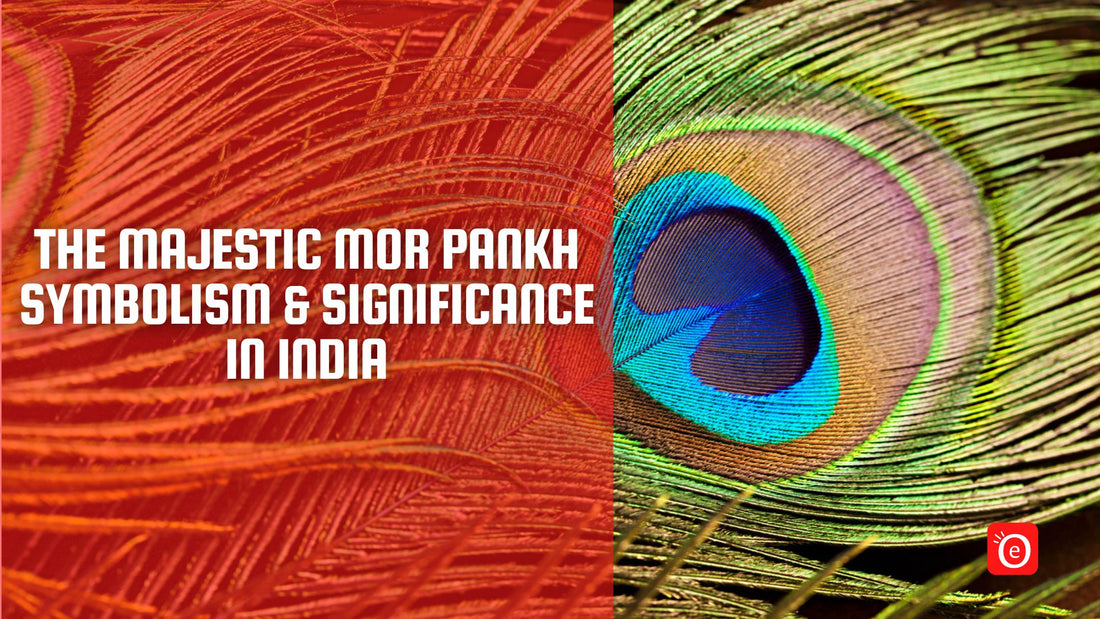India, a land steeped in culture and tradition, is adorned with a myriad of symbols that carry deep meanings and cultural significance. Among these, the Mor Pankh, or peacock feather, holds a special place. Beyond its aesthetic appeal, the Mor Pankh has profound symbolism deeply rooted in Indian mythology, spirituality, and cultural practices.
Mythological Significance:
In Hindu mythology, the peacock is associated with various deities, most notably Saraswati, the goddess of wisdom, and Kartikeya, the god of war. The vibrant Mor Pankh is often depicted as an adornment in the hair or headgear of these deities, symbolizing divine beauty, grace, and protection. The peacock's association with Kartikeya, who rides a peacock as his mount, signifies the triumph of good over evil.
Spiritual Symbolism:
Beyond mythology, the Mor Pankh holds spiritual significance in Hinduism. The eyespots on the peacock feather are believed to symbolize the vigilant watchfulness of the gods, signifying protection and auspiciousness. Many devotees use peacock feathers during religious rituals and ceremonies to invoke positive energies and seek divine blessings.
Cultural Representations:
The Mor Pankh's aesthetic appeal is not limited to its symbolism in mythology and spirituality; it is also a popular motif in Indian art, dance, and literature. The vibrant colors and intricate patterns of the peacock feather have inspired various art forms, including traditional paintings, dance costumes, and intricate embroidery. The Mor Pankh is often used as a design element in textiles, jewelry, and home decor, reflecting its enduring cultural significance.
Symbol of Beauty and Grace:
Peacocks are known for their dazzling plumage and graceful dance, making them symbols of beauty and elegance. The Mor Pankh, with its iridescent hues and intricate patterns, is celebrated for its aesthetic appeal. In Indian weddings, brides often adorn themselves with peacock feather-inspired jewelry and accessories, signifying beauty, grace, and good fortune.
Conservation and Protection:
While the Mor Pankh is deeply revered in Indian culture, there is also a growing awareness of the need for conservation and protection of the national bird, the Indian Peafowl. The Wildlife Protection Act in India prohibits the trade of peacock feathers and hunting of these birds. Efforts are being made to raise awareness about the importance of preserving the peacock population and ensuring the sustainable use of their feathers in cultural practices.
The Mor Pankh, with its rich symbolism, spiritual significance, and cultural resonance, remains an integral part of India's heritage. Beyond its aesthetic allure, the peacock feather serves as a reminder of the deep connection between mythology, spirituality, and culture in this diverse and vibrant land. As we celebrate the Mor Pankh, it is crucial to also advocate for the conservation of the majestic peacock, ensuring that future generations can continue to appreciate its beauty and significance.





